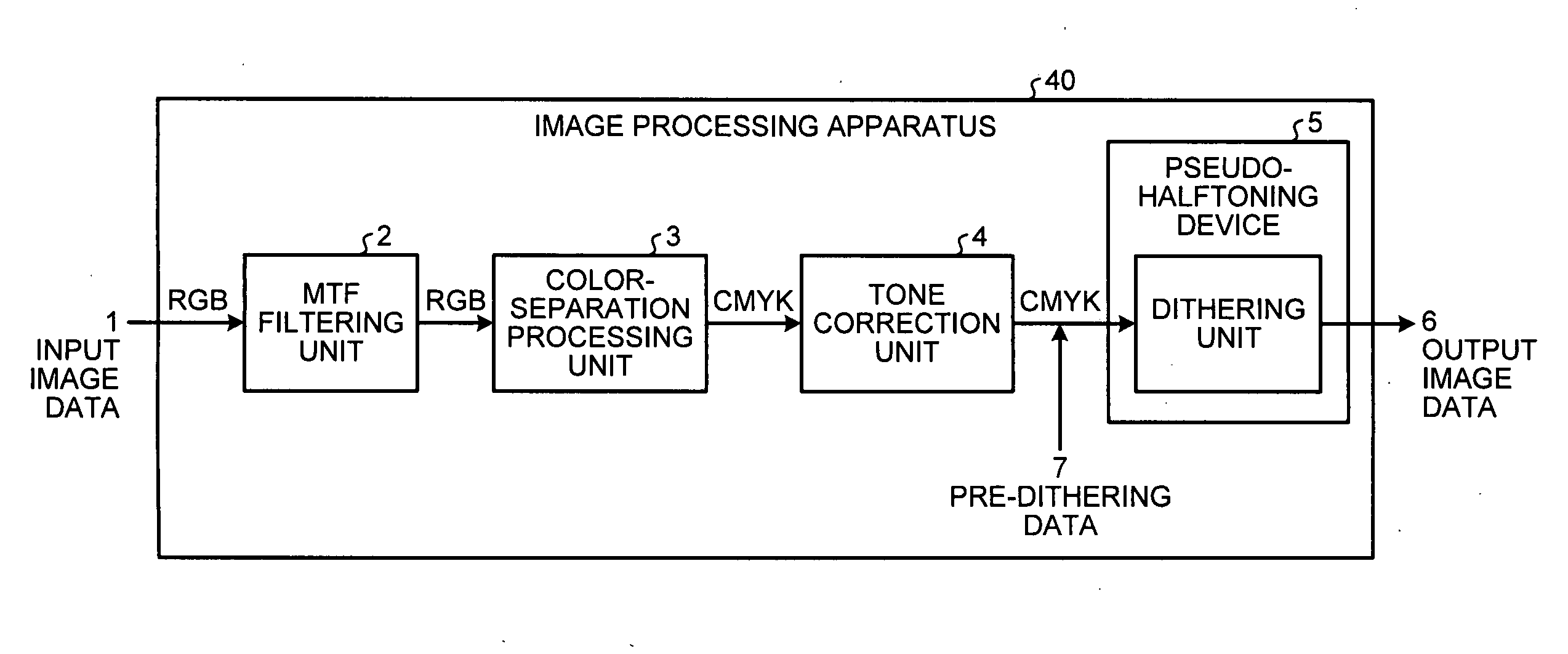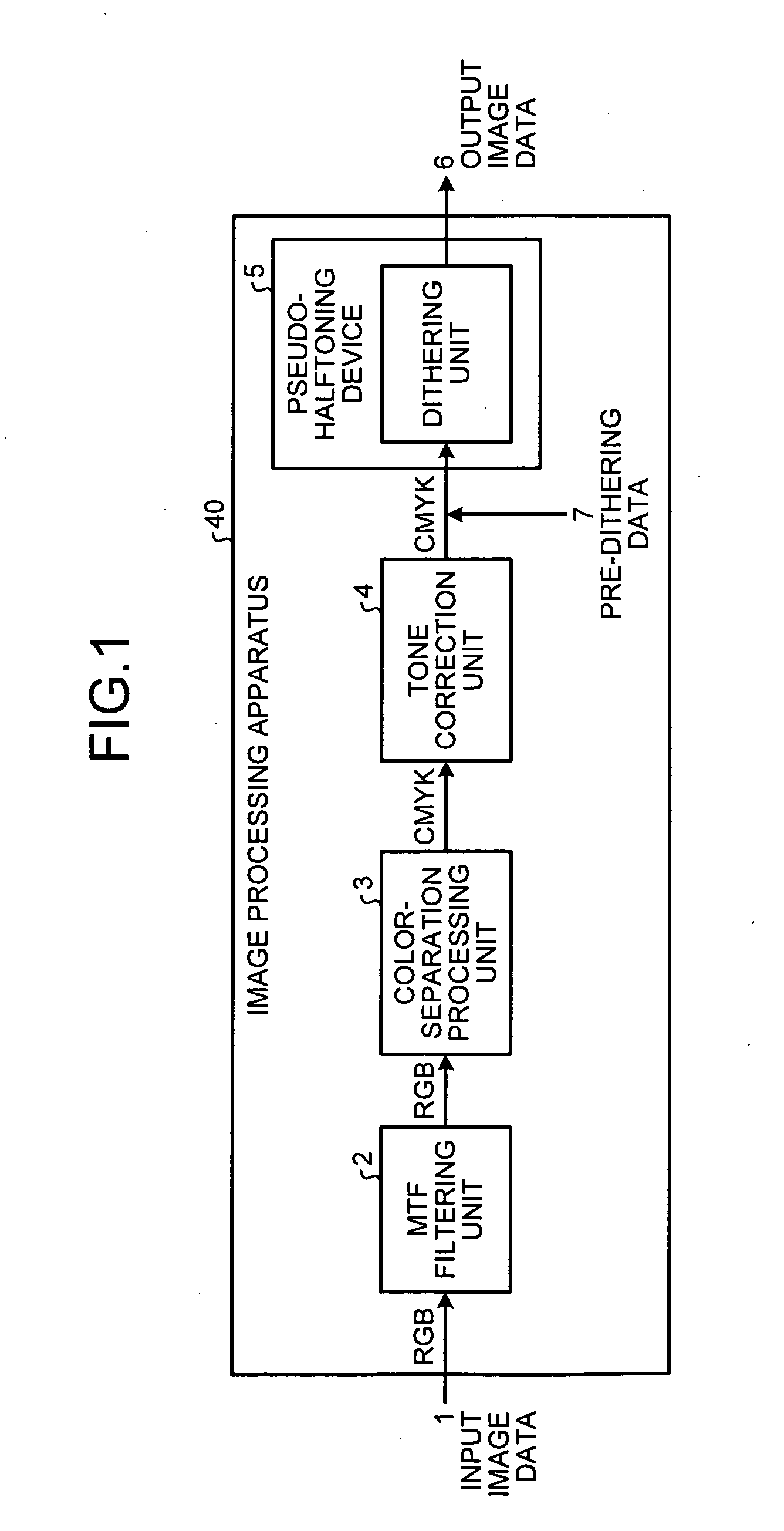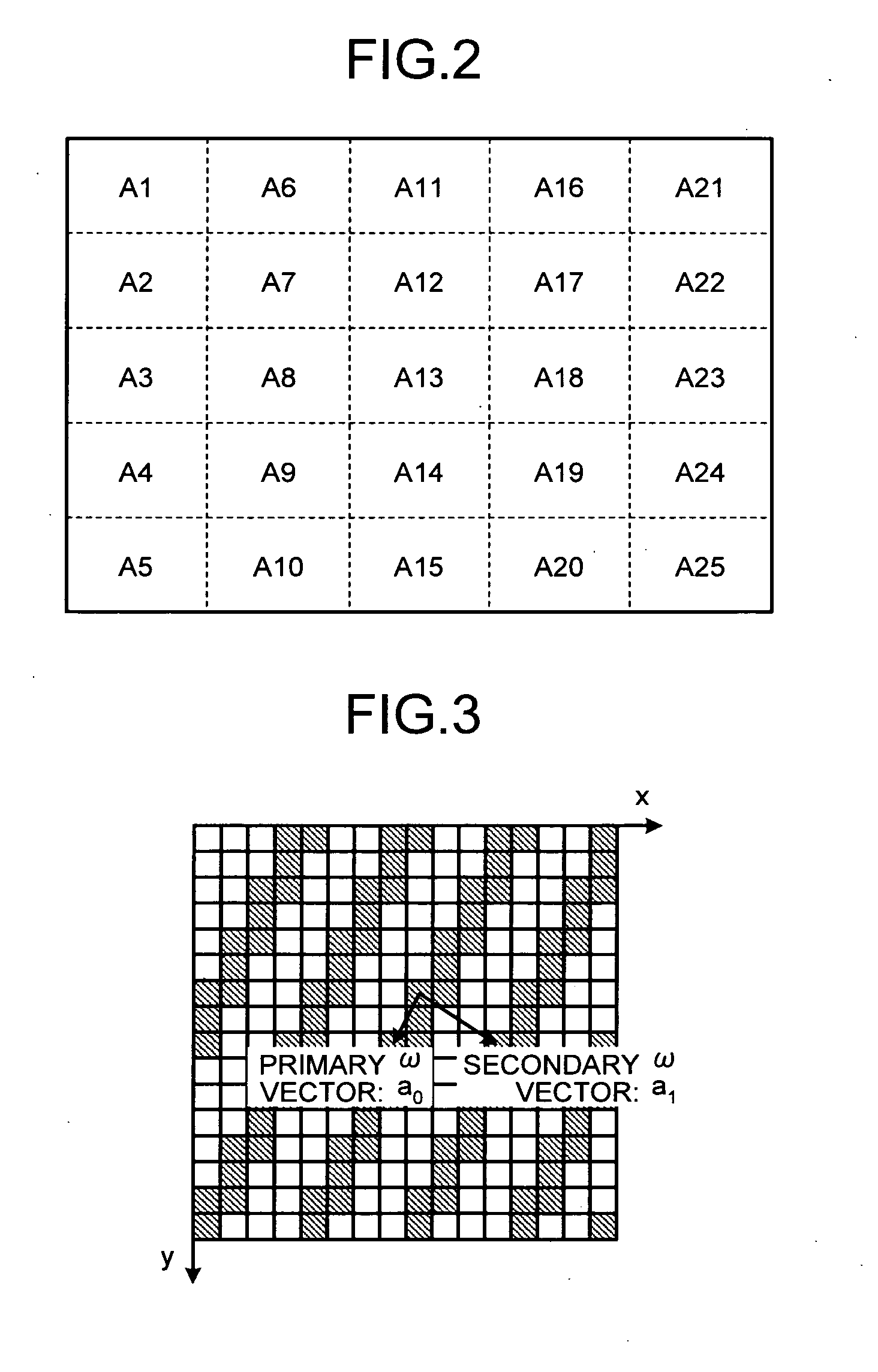Pseudo-halftoning device, image forming apparatus, and image forming system
- Summary
- Abstract
- Description
- Claims
- Application Information
AI Technical Summary
Benefits of technology
Problems solved by technology
Method used
Image
Examples
first example
[0078]Dithering to be performed by a pseudo-halftoning device according to the first example is described below.
[0079]The device according to the first example is configured to perform dithering by using a threshold matrix selected from a threshold matrix set according to a position in a target image. In the first example, as discussed above, threshold matrices to be used differ from one another depending on a position in a target image; however, dithering, which is to be performed after the threshold matrix has been selected, does not vary depending on a position in the target image. Accordingly, overview of the dithering is described below.
[0080]In the first example, 4-bit dithering for outputting 4-bit (16 values) data as pseudo-halftoned data is performed. The 4-bit dithering is performed by converting 8-bit data (hereinafter, “pre-dithering data”, presented in FIG. 1) (each pixel is represented by 256 gray levels from 0 to 255), which is obtained by performing the image process...
second example
[0096]A pseudo-halftoning device according to the second example of the invention is identical with the pseudo-halftoning device according to the first example in many portions. However, the second example partially differs from the first example in the process for generating the threshold matrices. As mentioned above in the description about the first example, different gradation characteristics are incorporated in the threshold matrices D1 to D25 in the threshold matrix set of the first example, and a restriction that the threshold matrices are to have the same periodic structure (screen angle and screen ruling) is imposed on the threshold matrices. The same goes for the threshold matrices of the second example. Note that no other restriction is imposed on the threshold matrices D1 to D25 of the first example other than that the threshold matrices D1 to D25 are to have the same periodic structure. Put another way, in the first example, the dither matrices D1 to D25 are not necessa...
third example
[0099]A pseudo-halftoning device according to the third example of the invention is identical with the pseudo-halftoning device according to the first example and the second example in many portions. However, the difference between the third example and the first and second examples is whether final threshold matrices are generated and stored or not.
[0100]In the second example, the threshold matrices D1 to D25 incorporating the different gradation characteristics are generated for the image segments A1 to A25, respectively, and dithering is performed by selectively using one of the threshold matrices on a per-image-segment basis. In the second example, the threshold matrices D1 to D25 are generated from the parent matrix by causing each of the threshold matrices D1 to D25 to reflect necessary gradation characteristics for a corresponding one of the image segments. More specifically, relationships between the numbers 0 to 734 and the numbers 0 to 254 are determined on an image-segmen...
PUM
 Login to view more
Login to view more Abstract
Description
Claims
Application Information
 Login to view more
Login to view more - R&D Engineer
- R&D Manager
- IP Professional
- Industry Leading Data Capabilities
- Powerful AI technology
- Patent DNA Extraction
Browse by: Latest US Patents, China's latest patents, Technical Efficacy Thesaurus, Application Domain, Technology Topic.
© 2024 PatSnap. All rights reserved.Legal|Privacy policy|Modern Slavery Act Transparency Statement|Sitemap



